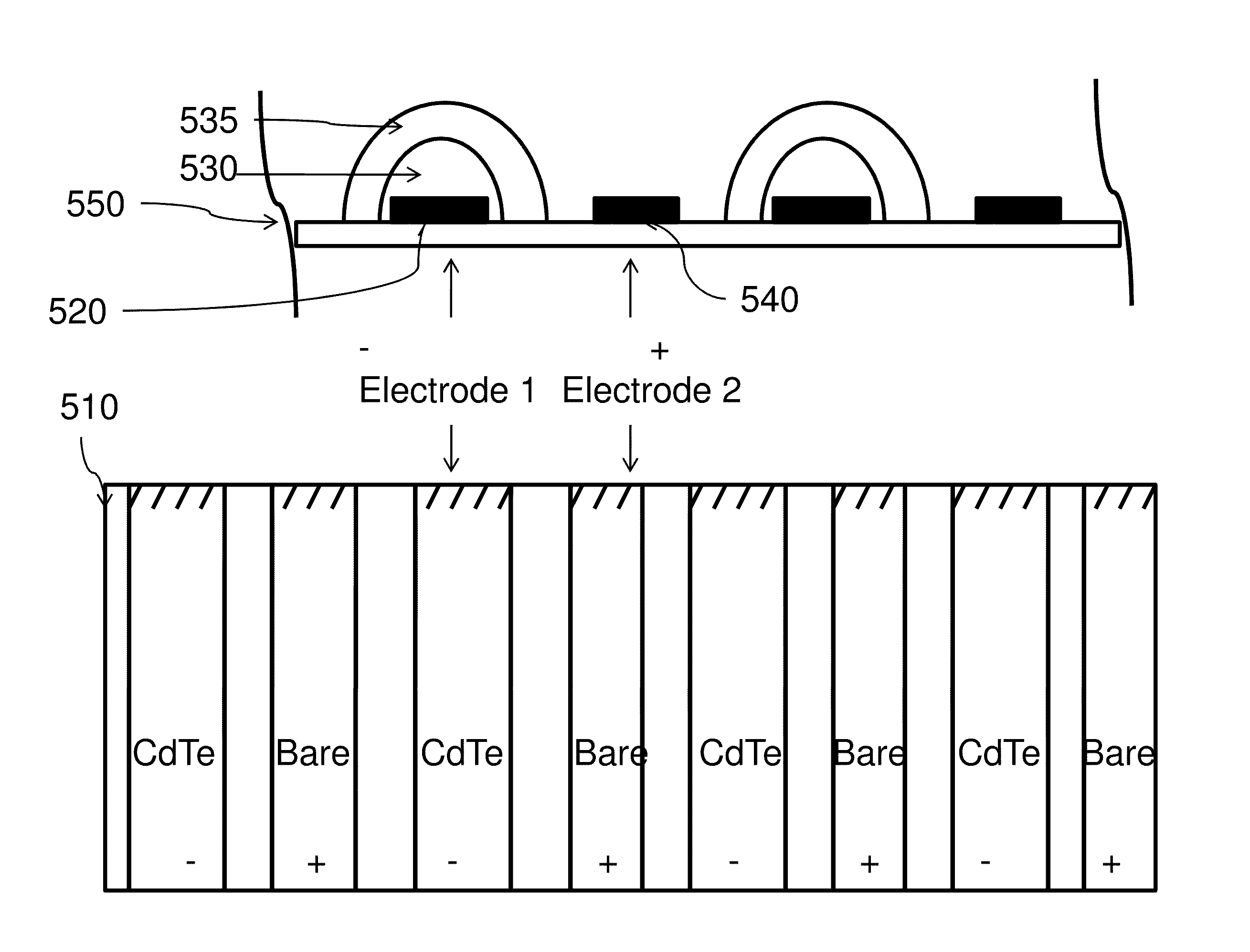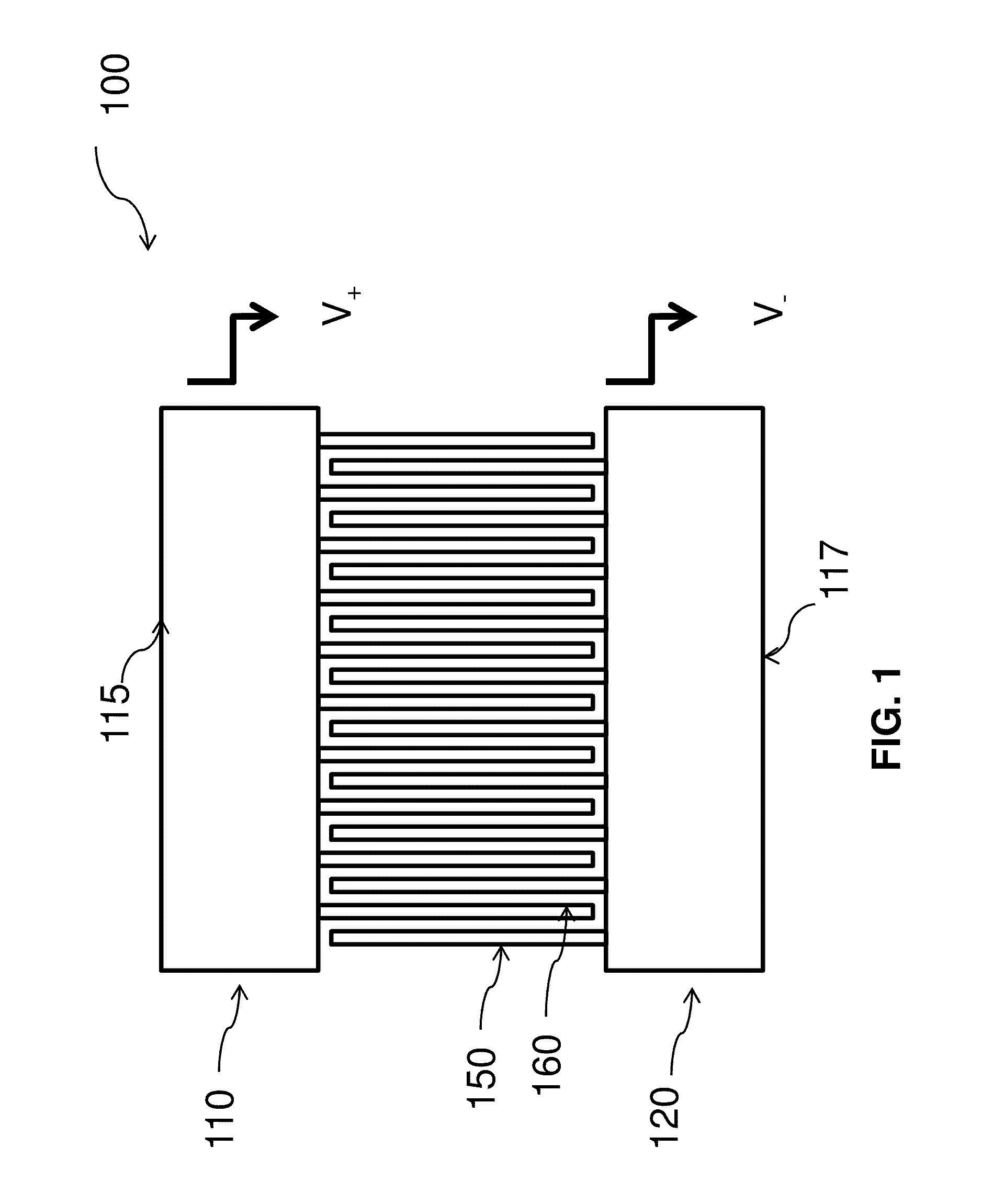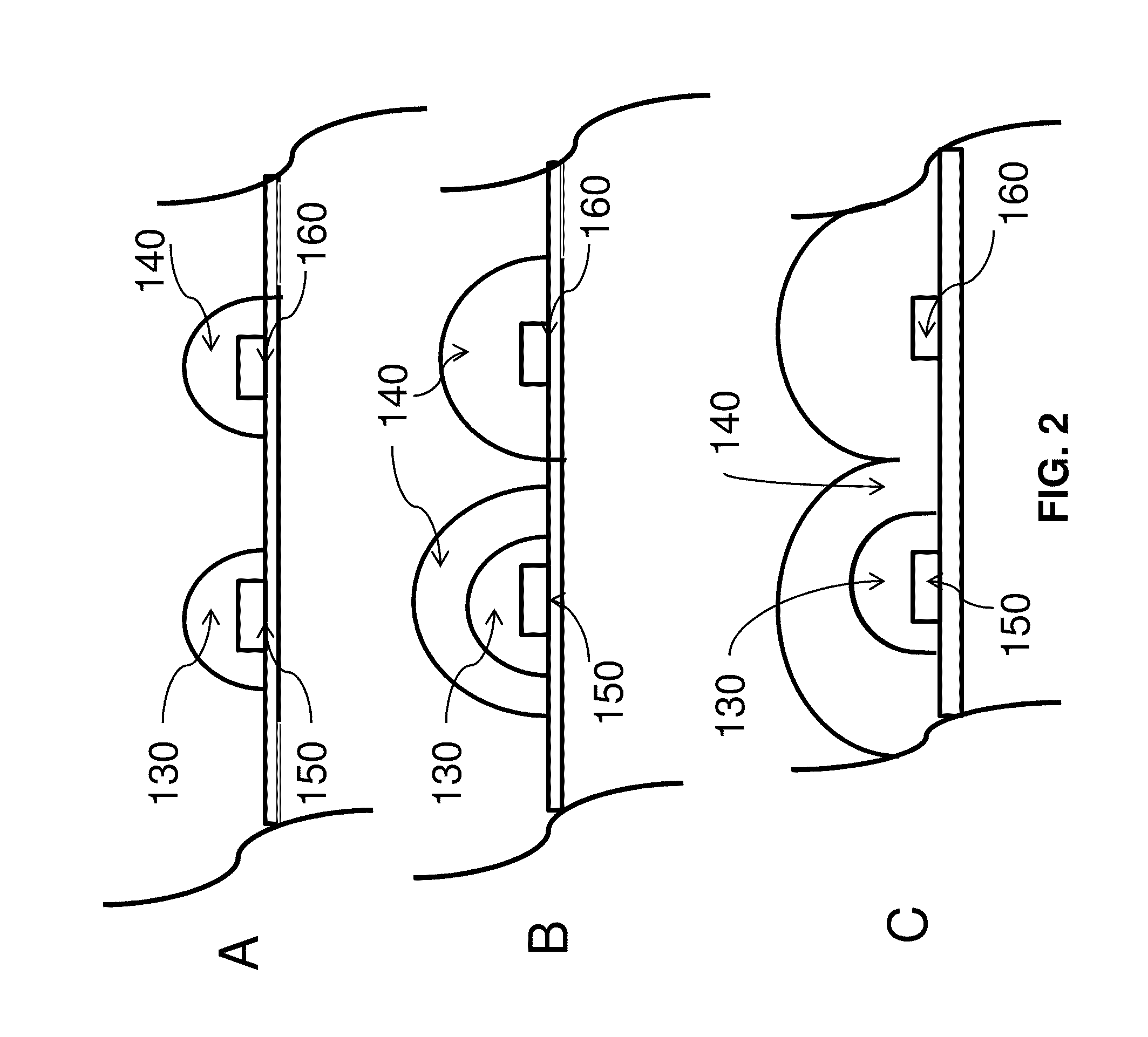Three Dimensionally Structured Thin Film Photovoltaic Devices with Self-Aligned Back Contacts
a technology of back contacts and thin films, applied in the field of photovoltaic devices, can solve the problems of affecting the performance of photovoltaic devices, reducing the efficiency of light conversion, and challenging the ability to ensure uninterrupted connectivity
- Summary
- Abstract
- Description
- Claims
- Application Information
AI Technical Summary
Benefits of technology
Problems solved by technology
Method used
Image
Examples
Embodiment Construction
[0047]The present disclosure is directed to three dimensionally structured thin film photovoltaic devices with self-aligned back contacts. Fabrication of this photovoltaic device includes an electrodeposition process on at least one of two or more interdigitated electrodes.
[0048]The electrodeposition process described herein applies to existing technologies for production of interdigitated electrodes to create a new and unobvious self-aligned electrochemical deposition process.
[0049]Interdigitated damascene wires with a pitch below 100 nanometers (nm) are regularly fabricated in interdigitated comb-like electrode structures to study leakage current in microelectronics applications. It is also known to deposit micrometer pitch interdigitated electrodes on top of semiconductors to form metal-semiconductor-metal structures for photodetectors. However, in accordance with the present disclosure, such patterned electrically conducting wires on an insulating substrate may serve as the acti...
PUM
 Login to View More
Login to View More Abstract
Description
Claims
Application Information
 Login to View More
Login to View More - R&D
- Intellectual Property
- Life Sciences
- Materials
- Tech Scout
- Unparalleled Data Quality
- Higher Quality Content
- 60% Fewer Hallucinations
Browse by: Latest US Patents, China's latest patents, Technical Efficacy Thesaurus, Application Domain, Technology Topic, Popular Technical Reports.
© 2025 PatSnap. All rights reserved.Legal|Privacy policy|Modern Slavery Act Transparency Statement|Sitemap|About US| Contact US: help@patsnap.com



